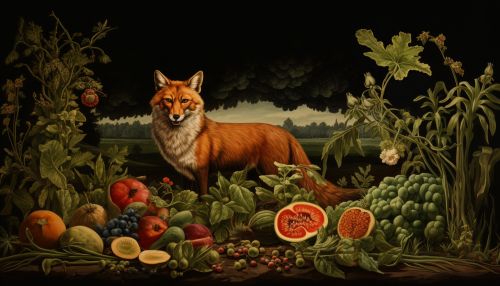Food chain
Introduction
A food chain is a linear sequence of organisms through which nutrients and energy pass as one organism eats another. The levels in these chains are commonly referred to as trophic levels, and include primary producers, primary consumers, secondary consumers, tertiary consumers, and decomposers.


Primary Producers
Primary producers, also known as autotrophs, form the base of the food chain. These organisms, which include plants, algae, and some types of bacteria, are capable of synthesizing organic compounds from inorganic substances. They do this through the process of photosynthesis, which uses sunlight, carbon dioxide, and water to produce glucose and oxygen. Primary producers are essential to all life on Earth, as they are the initial source of energy that fuels the food chain.
Primary Consumers
The next level in the food chain consists of primary consumers, or herbivores. These organisms consume primary producers, gaining energy and nutrients by eating plants or algae. Examples of primary consumers include insects, birds, and herbivorous mammals like deer and rabbits. Primary consumers play a crucial role in the food chain, as they transfer energy from primary producers to the higher trophic levels.
Secondary Consumers
Secondary consumers, or carnivores, feed on primary consumers. They are typically predators, hunting and consuming animals that eat plants. Examples of secondary consumers include wolves, lions, and owls. Some secondary consumers are omnivores, meaning they eat both plants and animals. Bears and humans are examples of omnivorous secondary consumers.
Tertiary Consumers
The next level of the food chain is made up of tertiary consumers. These are animals that eat secondary consumers. Tertiary consumers are typically apex predators, meaning they have no natural predators. Examples of tertiary consumers include eagles, sharks, and humans. Like secondary consumers, some tertiary consumers are omnivores.
Decomposers
The final link in the food chain is the decomposers. These organisms break down dead organic material and waste products, returning essential nutrients to the environment. Decomposers include bacteria, fungi, and certain types of insects. By breaking down dead and decaying matter, decomposers help to recycle nutrients back into the ecosystem, allowing primary producers to utilize them and continue the cycle of the food chain.
Energy Flow in Food Chains
Energy flow in food chains is governed by the second law of thermodynamics, which states that whenever energy is transferred or transformed, a portion of it is lost as heat. This principle is reflected in the concept of ecological pyramids, which illustrate the decrease in energy, biomass, and numbers from one trophic level to the next.
Food Web
In reality, the linear model of a food chain is overly simplified. Most organisms consume, and are consumed by, more than one species. This complex network of feeding relationships is better represented by a food web. Food webs provide a more accurate and holistic view of energy flow within an ecosystem.
